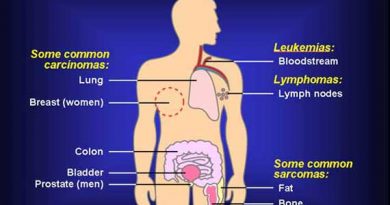Navigating prescription medication cover and formulary tiers in South Africa
Prescription medication cover ensures that individuals can access necessary medications prescribed by healthcare professionals to manage acute and chronic conditions. It plays a pivotal role in maintaining health, managing symptoms, preventing complications, and improving overall quality of life.
Prescription medication coverage in South Africa refers to the extent to which a medical aid plan or benefit option covers the cost of prescribed medications. Different medical aid plans or benefit options offer varying levels of coverage, which may depend on the type of plan and the specific benefits offered by the plan.
Without adequate cover, individuals may face financial barriers that limit their ability to obtain essential medications, potentially compromising their health outcomes. The cost of prescription medication is a significant part of comprehensive medical cover.
Understanding how prescription medication will be covered is crucial so that individuals can make informed decisions about their healthcare and optimise the benefits offered by their private medical aid plans.
Formulary tiers in South Africa
When selecting a plan from a medical aid provider it is crucial to review the specific plan or benefit option’s formulary list. The formulary is a list of medications the plan covers, and it will help you understand how the cost is covered. Depending on your chosen plan, it will either be covered in full or split between you and the medical aid.
In South Africa, medical aid schemes often classify prescription medications into formulary tiers to manage costs. These tiers determine the level of coverage provided for different medicines. While specific tiers and their labels may vary between schemes, they generally follow a similar structure:
Tier 1: This tier includes low-cost generic medications identified as safe and effective alternatives to brand-name medication. These are generally automatically approved by your medical scheme and usually have the lowest cost-sharing, e.g. no co-payments for the consumer.
Tier 2: Similar to Tier 1, this tier covers generic medications that may be slightly more expensive than preferred generics but are still cost-effective. Tier 2 medication may require a pre-authorisation from your medical aid.
Tier 3: This tier includes brand-name medications that are more cost-effective than other brand-name options. If your selected benefit option does not include these medications on the formulary, then they could require pre-authorisation and may require a motivation from your healthcare provider. Co-payments for medication in this tier, if not already listed on the formulary for your plan, are typically higher than for generic medicines.
Tier 4 (speciality medications): Speciality medications are high-cost drugs that treat rare or complex conditions. They often require specialised knowledge or administration methods. Cost sharing for speciality medications may vary significantly depending on your chosen benefit option/plan and the medical aid scheme.
In certain instances, your medication may not be on your plan’s formulary. But no worries, taking steps to get your plan to cover a non-formulary drug is easier than you think. Every medical aid has an “exceptions process”.
Although the exceptions process may vary from one medical aid to another, some similarities exist. For instance, your healthcare provider may need to confirm that the medication they prescribed is necessary by stating that the medication covered by your plan won’t be as effective or may even be harmful. Another common exception is when your plan only covers a lower medication dosage, which may be insufficient for your needs. This often occurs in cases of overweight or obesity where a higher dose may be required but isn’t covered.
To apply for the exception process, you must contact your medical aid and ask for more information about the appropriate process to follow. This may include completing relevant forms required by your medical aid and submitting it by mail or online. If your plan covers the medication long-term, it will likely place it on the highest tier.
Navigating Formulary Tiers
To effectively navigate formulary tiers:
Understand your scheme’s formulary: Obtain a copy of your plan’s formulary or preferred medication list. It will help you understand which medications are covered and the associated cost-sharing structure.
Discuss options with your healthcare provider and medical aid: Check with your medical aid whether the medication prescribed is on your plan’s formulary, and if not, then discuss potential alternatives with your healthcare provider to manage costs effectively.
Explore generic options: Generic medications are often more cost-effective and are equally safe and effective than brand-name medication. Discuss generic alternatives with your healthcare provider to explore potential savings.
Prior authorisation requirements: Some medications may require prior authorisation from your medical aid scheme. Your healthcare provider can assist you with the necessary steps to obtain authorisation.
Engage with your scheme: If you require medications in higher tiers, consider contacting your medical aid scheme to discuss options and possible exceptions or cost-sharing adjustments.
Remember, each medical aid scheme may have its unique formulary, so reviewing your specific plan documents and engaging in open communication with your scheme and healthcare team is essential.
You must choose a reputable medical aid scheme and plan for you and your circumstances. Medshield advises that you research the scheme’s prompt claims payment history, solvency record, credit rating, transparent, easy-to-understand management tools and terms and conditions, and selection of benefit options.
Your health and well-being are by far your most precious assets. Medshield provides nine plans that are designed to ensure you make the best and most affordable choice for your prescription medication needs.




